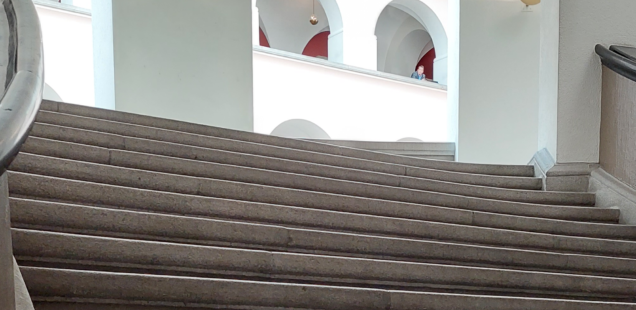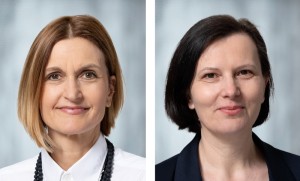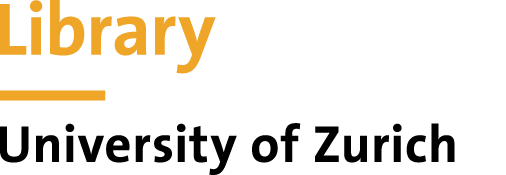
Does Open Science benefit academic careers?
Read this post in
 Deutsch
Deutsch
Open Science must be worthwhile! Under this premise, Dr. Karin Gilland Lutz and Dr. Mihaela Falub from the office of Gender Equality and Diversity are addressing the hiring process for professorial positions. In the HI-FRAME project, they are developing a procedure that systematically includes and rewards Open Science activities in the evaluation of applicants.
Karin Gilland Lutz’s and Mihaela Falub’s project HI-FRAME – Measure what really matters: a framework for Open Science professorial hiring takes a close look at a key success factor of Open Science and creates strong incentives for an Open Science scholarly culture at the University of Zurich. On Wednesday, May 11, 2022, the project leaders will present their work in the Lunch & Learn Open Science lecture series (registration). The Open Science Services (OSS) team of the University Library has taken the opportunity to ask the speakers some questions in advance.
OSS: Why is it important to incentivize Open Science in the hiring process? Are representatives of Open Science at a disadvantage in the competition for a professorship these days?
Karin Gilland Lutz and Mihaela Falub: It’s all about aligning incentives for universities as well as for individual academics. UZH adopted an Open Science policy [PDF] in September 2021 to harness the unquestionable benefits of Open Science. The policy depends on academics embracing Open Science in their day-to-day activities here at UZH. However, it is important to recognize that Open Science makes “big asks” of individual academics: Many Open Science activities and practices are new in the disciplines and make different skills sets as part of an academic professional profile necessary. If this is not duly rewarded, for instance in hiring decisions, then a sense could arise in the academic community that going down the Open Science path is a career risk – especially for early-career researchers, who are not yet firmly established in their fields. Since no-one wants that, there is a need for institutions like UZH to reward what they value, to practice what they preach. Otherwise, there is a risk that academics who engage with Open Science will have a disadvantage in the competition for professorships.
“There is a need for institutions like UZH to reward what they value.”
How do other universities reward Open Science in their recruitment practices? Do you know of any good examples?
Some of our LERU partners across Europe are good examples. For instance, Utrecht University has developed an Open Science-attuned model of recruitment and promotion, and Dutch universities in general are quite far in this regard. It is notable that many European countries are developing national frameworks; we see this in the Netherlands as well as in, for instance, Ireland, Norway and Finland.
How do assessment criteria on Open Science practices differ from traditional assessment questions, and where do they coincide?
They coincide in that they revolve around excellence. They differ in how they understand that term, how academic excellence is measured and assessed. There are two parts to that difference:
Firstly, it’s about dimensions. Since the Open Science movement addresses all aspects of the scientific process, assessment needs to do that too. The upshot is that, while research remains central, the Open Science view is broader and includes a stronger focus on dimensions such as impact, leadership, contributions instead of individual achievements, open research data as well as code, software and other tools, and open educational resources. Also, since Open Science has such a strong focus on the role of science in solving societal problems, Open Science hiring necessarily includes a strong EDI (equality, diversity, inclusion) perspective. It matters who is part of making science because that naturally impacts on which societal problems science tries to solve and which are left unaddressed.
“The Open Science view is broader and includes a stronger focus on dimensions such as impact, leadership, contributions instead of individual achievements …”
The second difference is about not relying on indices and impact factors as short-hand for excellence. UZH committed itself to this in principle by signing the San Francisco Declaration on Research Assessment (DORA) in 2014. There used to be some criticism of DORA because it had a lot to say about what not to do – don’t rely on impact factors! – without offering concrete ideas for what to rely on instead. But this has changed utterly, too, with the DORA-related project TARA, the repository “Re-imagining academic assessment: Stories of innovation and change” as well as the DORA’s grants for Communities of Practitioners (CoP) to promote bottom-up initiatives that go beyond declarations into the realm of practical application.
What are your recommendations to sustainably link the professorial hiring process with the scholarly culture of Open Science? What needs to change so that you could consider your greater project goals achieved?
The path towards a culture of openness is challenging. It entails competing demands, practical challenges and a multitude of actors. HI-FRAME has professorial hiring in an Open Science environment in the crosshairs, but what we learn in this project could be extended to other academic evaluation processes, for example promotions among the professoriate or academic recruitments at all levels. The same applies to other research and researcher assessment and evaluation processes in our university and beyond.
“The path towards a culture of openness is challenging.”
The overall evaluation criteria need to change so that they indeed measure what we value as higher education institutions. This is an ongoing process that does not end with any single project. The growing significance of research on research internationally is very important here. We look for instance to CWTS in Leiden and RORI in the UK and also take note of the fact that actors from UNESCO to the European Commission to Science Europe to the European University Association currently have these issues at the top of their agendas.
What is happening regarding research assessment on a national level? Are there any similar projects or efforts to change research assessment?
HI-FRAME is funded within the federal program P5, action line research assessment. As far as we know, HI-FRAME has no “sister projects” at other Swiss higher education institutions, although we are aware of smaller-scale developments, as for instance at the University of Geneva. To date, we have looked more to the Swiss National Science Foundation because it is arguably the early mover in the Swiss context. Although awarding research funding is not the same as appointing chairs, our exchanges to date with the SNSF have been very inspiring. Research funders and research-performing organizations have different roles, and each should stay in their own lane, but at the same time it seems important that various actors who inhabit the same higher education landscape remain in lockstep with one another. Otherwise, we might have a situation where a funding body demands Open Access publication, whereas some universities prefer to hire academics who publish according to the logic of impact factors.
Switzerland is beginning to develop a national approach to rewards and incentives in an Open Science environment. The recently published national action plan on Open Research Data outlines measures in this regard. This work is only just beginning but its significance should not be underestimated.

Dr. Karin Gilland Lutz and Dr. Mihaela Falub are with the Department of Equality and Diversity at the University of Zurich and head the project HI-FRAME – Measure what really matters: a framework for Open Science professorial hiring.
Interview by Samuel Nussbaum and Melanie Röthlisberger, Team Open Science Services
Photos by Melanie Röthlisberger (cover) and Frank Brüderli (portraits)

Comments are closed, but trackbacks and pingbacks are open.